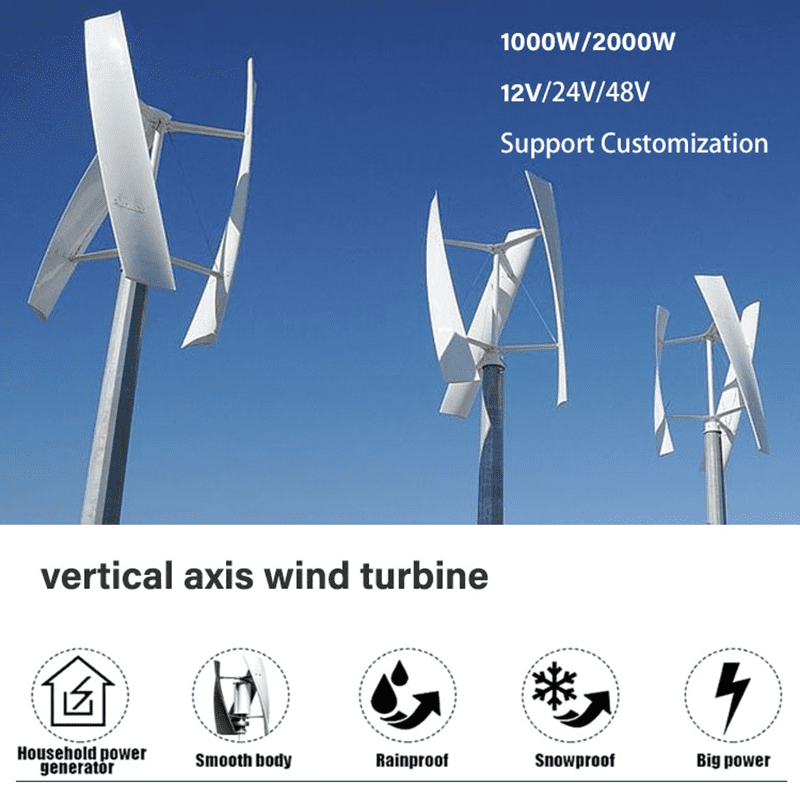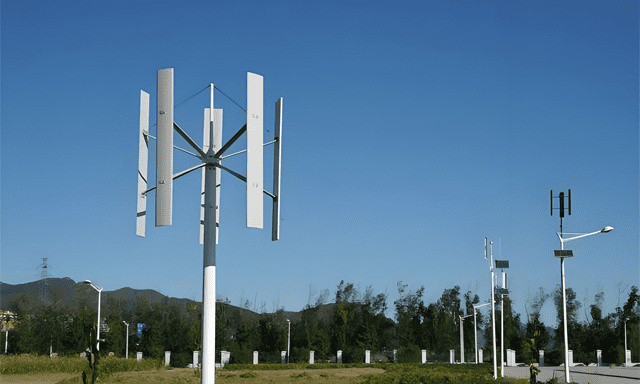Lack of efficiency and reliability
VAWT faces efficiency and reliability challenges compared to HAWT, hindering its popularity. VAWT’s vertical rotor design compensates for HAWT’s wind direction sensitivity.
However, VAWT’s complex dynamics and factors like aerodynamic force and torque fluctuation result in lower efficiency (60%-80% of HAWT). Additionally, VAWT‘s complex structure is prone to external factors affecting reliability and lifespan. In contrast, HAWT offers simpler, more stable, and reliable design.
The cost advantage is not obvious
Although VAWT is relatively simple in structural design, its low power generation efficiency results in high cost per unit of power generation. Generally speaking, the power generation cost of VAWT is 20%-30% higher than that of HAWT.
In addition, VAWT’s blade manufacturing process is more complex and requires more labor input, which also makes VAWT’s initial investment cost higher. Coupled with the relatively high maintenance costs, these factors jointly inhibit the promotion and application of VAWT.
For large wind farms, HAWT has stronger economic competitiveness due to its higher power generation efficiency and lower operating costs. This is also an important reason why VAWT has not been widely used in large wind power projects.
Limited applicable scenarios
VAWT’s low power generation efficiency and high cost make it difficult to compete with HAWT in large centralized wind farms. But in some specific application scenarios, VAWT still has its unique advantages.
In cities or near buildings, VAWT’s vertical design allows it to effectively utilize complex airflow, showcasing its advantages. Its small size and low noise make it suitable for distributed power generation in urban environments like rooftops and courtyards.

Technological innovation is slow
Compared with mature horizontal axis wind power generation technology, the development of vertical axis wind power generation technology has been relatively slow. The main reasons for this situation include:
Inadequate investment in R&D
Since vertical axis wind power generation technology is relatively new and has disadvantages in terms of efficiency and reliability, the industry is generally cautious about its development prospects. Therefore, related R&D investment has been relatively limited, and the speed of technological innovation has been slow.
Insufficient basic research
Regarding basic theoretical issues such as aerodynamic characteristics and load characteristics of vertical axis wind turbines, the industry still has varying degrees of cognitive deficiencies. This restricts further optimization and innovation of technology to a certain extent.
Few demonstration projects
Due to the limited promotion and application of vertical axis wind turbines, there are few related demonstration projects, which also reduces the motivation for technological progress. The lack of feedback from large-scale applications also makes technological improvements less targeted.
Insufficient policy support
Policy support is an important guarantee for the development of emerging technologies. However, judging from the current situation, vertical axis wind turbines have not received sufficient policy support.
On the one hand, governments of various countries pay more attention to and support mature horizontal axis wind power technology when formulating renewable energy development plans. In contrast, vertical axis wind power generation has received less attention and lacks targeted support policies.
On the other hand, some existing policy supports, such as tax incentives, investment subsidies, etc., tend to be more oriented towards the construction of large-scale wind farms, while insufficient support for small, distributed vertical-axis wind power projects. This also restricts the promotion and application of vertical axis wind power technology.
Market awareness needs to be improved
The limited popularity of vertical axis wind turbines (VAWTs) and insufficient consumer understanding of VAWT performance and applications have hindered the development of demand.
Improving user awareness of renewable energy is critical to promoting VAWT as a distributed power generation technology, which requires collaborative efforts from governments, businesses and others.
Therefore, the popularity of VAWT is affected by multiple factors such as certain technical limitations, insufficient policy support, and low market awareness.Only through continuous innovation, policy support and market cultivation can VAWT truly achieve large-scale application.

